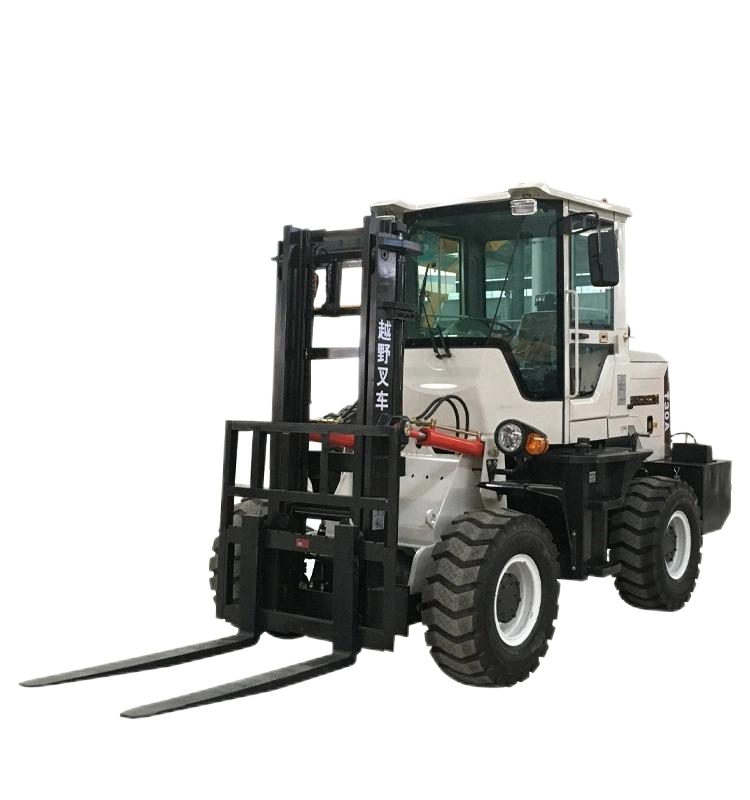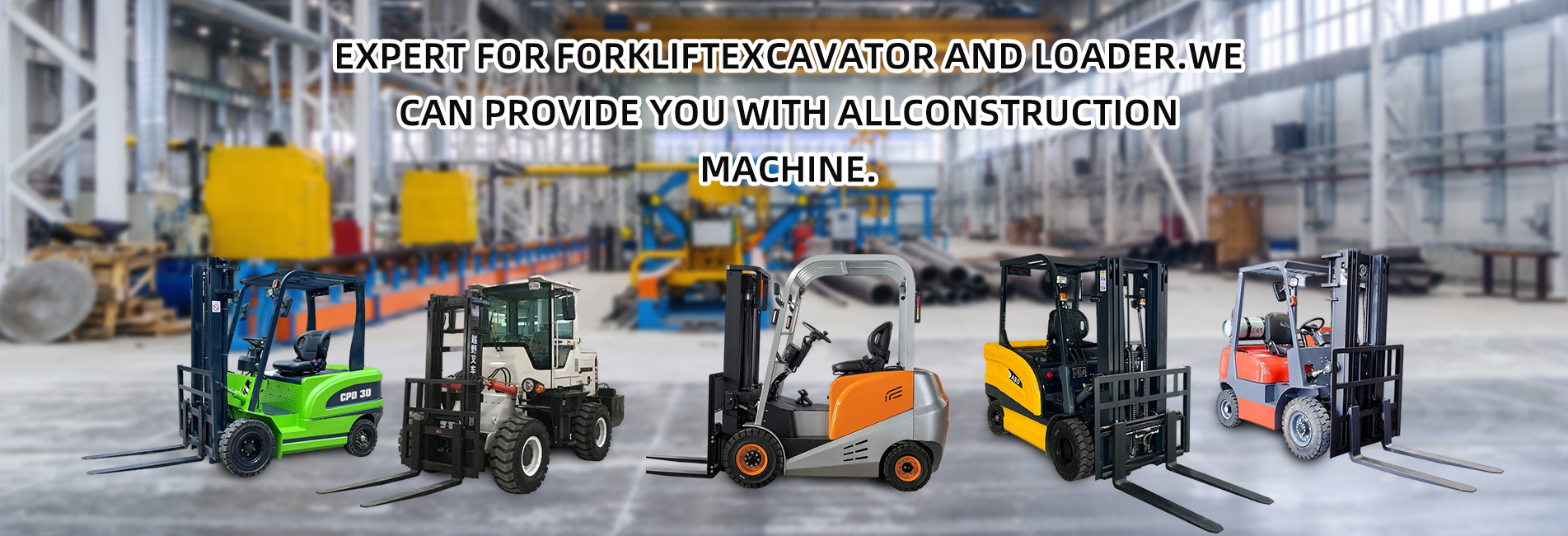Off-road forklifts are a type of engineering vehicle capable of loading, unloading, stacking, and transporting materials under complex terrain conditions, featuring excellent off-road performance and wide applicability. The following is a detailed introduction to off-road forklifts:

Performance Characteristics
- Strong Passability: Equipped with large-diameter, wide-base off-road tires, with a minimum ground clearance of over 300mm and a departure angle of more than 30°. Some models are also equipped with four-wheel drive and differential locks, enabling them to easily handle unpaved roads such as potholes, mud, and gravel, and avoid getting stuck.
- Good Mobility: The maximum driving speed is usually 30-40km/h, with a power factor exceeding 0.65, excellent acceleration performance, and a climbing ability of 25°-30°, allowing for fast driving and turning in complex terrain.
- High Stability: It has a large wheelbase and track width, which enhances lateral and longitudinal stability. The frame swing angle generally reaches ±30°-40°, and the front axle can swing vertically ±8°-12° relative to the frame, ensuring the stability of the vehicle body when operating on uneven ground.
- Efficient Operation: The hydraulic system is efficient. For example, the lifting/lowering time of the Lugong T838 off-road forklift is 5 seconds and 6 seconds respectively, which can shorten the single operation cycle. The mast tilt angle is generally 10°-15° forward and 15° backward, facilitating safe loading and unloading of goods on uneven ground.
- Reliable Transmission: It adopts various transmission methods such as mechanical transmission, hydraulic shift mechanical transmission, hydraulic transmission, and hydrostatic transmission. Through the full-power matching method, it ensures that the overall parameters can still be optimized under working conditions such as full-load climbing.
- Braking Safety: Except for small-tonnage forklifts that use expanding shoe brakes, most use caliper disc brakes. Large-tonnage forklifts also use wet brakes, and the parking brake is most commonly an independent hand brake, ensuring the safety of vehicle driving and operation.
Structural Characteristics
- Frame Structure: There are two types: articulated and integral. The articulated frame has a large swing angle, which can achieve a small turning radius and is easy to operate; the integral frame is generally used for small-tonnage forklifts, with single-bridge drive and differential locks on the drive axle.
- Axle Design: The rear axle is fixed to the frame, and the front axle can swing vertically relative to the frame. A supporting hydraulic cylinder is set between the frame and the front axle, which can keep the lifting mast in a lateral vertical state and improve driving comfort.
- Tire Selection: Equipped with large-diameter, wide-base off-road tires, and some models use semi-solid tires, which have both puncture resistance and grip, adapting to harsh road conditions.
- Cab Layout: The driver's seat is generally arranged forward, and the articulated forklift is placed on the front frame as much as possible, which can provide a good view. According to the operation requirements, a overhead guard type cab with FOPS/ROPS can be installed.
Applicable Scenarios
- Construction Sites: It can transport building materials such as steel bars and cement pipes, load and unload stones and wood with clamps, and clean up ruins and debris. The high ground clearance and puncture-resistant tires can reduce the risk of chassis scratches and tire blowouts.
- Agriculture and Forestry: It can stack straw with hay forks, transport logs with log grapples, and load and unload grains with grain buckets in granaries, suitable for operations in muddy fields and mountainous forest areas.
- Logistics, Warehousing and Ports: It can be used for short-distance transportation in 码头 container yards, loading and unloading bulk goods in open warehouses, and precise stacking with side shifters. The four-wheel drive has high stability on wet dock floors.
- Emergency Rescue and Municipal Administration: It can be used for cleaning up post-disaster ruins, snow removal with snowplows in winter, and transporting sandbags during floods, etc. It has strong all-weather operation capability. Some models can be optionally equipped with roll-over protection frames and cab air conditioners to ensure operation safety and comfort in extreme environments.


